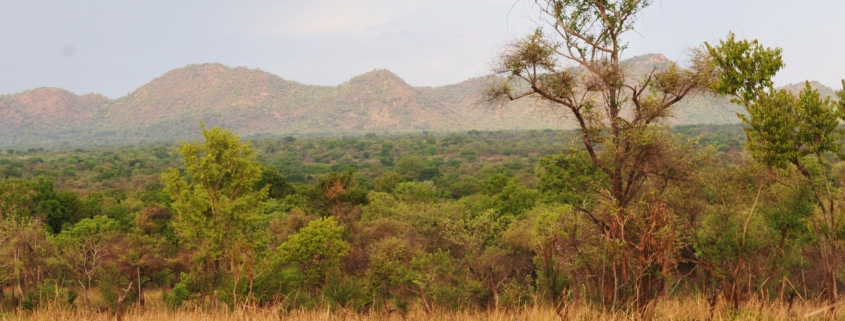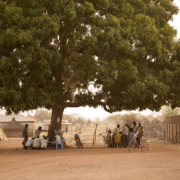In our last blog post titled Leave No ‘R’ Behind: Understanding the Importance of Fostering Resilience I in the Context of Fragility, Conflict, and Violence, we discussed how experiences and understanding of resilience differ across different levels of society. Building on that discussion, the following discussion explores programmatic approaches that can be used by the World Bank and other development and aid partners to foster resilience.
Several elements of program design and implementation can be leveraged to ensure that interventions support, rather than undermine, resilience:
- Strengthening community ownership through iterative consultations in program interventions – Given that resilience can often be difficult to observe by external partners new to the context, engaging closely with communities is key to identifying and promoting it. This can be done by ensuring that external partners’ understanding of vulnerability align with communities’ and is reflected in beneficiary targeting criteria. Carrying out periodic consultations with community groups at all stages of the project cycle provides not only insights into resilience-centered behaviors that may arise or already exist within communities but also how projects can help to enhance and foster them. For instance, in a community where an education project is carried out, peer support groups can emerge and lead to stronger relationships within communities that enhance the uptake and impact of project activities. Programmatic interventions can be leveraged to foster these networks and ensure their sustainability beyond the lifecycle of the project.
- Flexibility in project design and implementation – Fostering resilience requires programs to be agile in order to respond to developments within target communities and capitalize on new learning as implementation gets underway. This means building flexibility into the design of project activities and results indicators that provides leeway for project teams to identify and foster sources of resilience as and when they are observed. For instance, if a community relocates during the rainy reason, it may be useful for essential health services initially delivered in community health centers to shift to mobile delivery in order to ‘follow the people’ as they move.
- Fostering effective coordination among development and aid partners – There is a need for development partners and other aid actors engaged in resilience-focused programming to adopt effective coordination mechanisms. This can help ensure resources are not concentrated in the same locations and communities; enable agencies to reach more communities; improve the complementarity between humanitarian, development, and peacebuilding programmes that all seek to support long-term resilience; and provide opportunities for learning among the different partners.
Resilience in practice: Things to consider moving forward
Development project task teams and aid actors more broadly face enormous demands and challenges, especially in FCV contexts. The idea of adding a focus on resilience into operational planning can seem like just another ‘key issue’ in a list that is already too long. Integrating a resilience lens into programming requires a two-pronged approach that systematically incentivizes teams to focus on resilience in their projects, while also providing them with the support they need to impactfully do so. Here are a few entry points that might help on both fronts:
- Adopt a resilience lens across programs. Using a resilience lens for all programming (not just programs labeled ‘resilience’) will help teams consider how their projects contribute to the resilience of communities and households at the design stage, as well as encourage teams to learn about how communities define and pursue strategies to build their own resilience. In addition to identifying drivers of, and risks to FCV, the WBG Risk and Resilience Assessment (RRA) methodological framework calls for a robust accounting of sources of resilience in FCV settings and concrete recommendations of how positive forms of resilience can be reinforced through operations. This dual focus on FCV risks and sources of resilience illustrates a critical point, which is that ensuring programs are conflict-sensitive can increase their chances of building the resilience of individuals and communities while also addressing the underlying drivers of conflict and violence. The FCV Group of the World Bank, which often authors or co-authors RRAs, can work directly with task teams to help translate the FCV drivers and sources of resilience identified in RRAs into concrete elements of programmatic design.
- Elevate the focus on resilience in project design documents. All donors and senior decision makers in operational agencies should elevate the focus on resilience in their project design and approval documentation processes. At the World Bank, project appraisal documents (PAD) already devote a section to risks and risk mitigation. Yet, inconsistently with the institutional approach to RRAs, appraisal documents do not ask task teams to identify sources of resilience to FCV or how projects will seek to reinforce them. Asking teams to incorporate resilience into PADs, such as by adding a dedicated paragraph or even a section would help ensure greater uptake and operationalization of the analysis on sources of resilience in RRAs, increase the application of analytical pieces within programmatic design and delivery, and foster greater discussion on resilience in internal review meetings across the project preparation cycle.
- Treat resilience like it counts. Including resilience-focused indicators in project results frameworks would help ensure task teams target, monitor, and report on resilience gains within their projects. This would not only support enhanced resilience in project communities, but also help build a repository of knowledge on resilience upon which teams in the same country and other contexts can draw to promote resilience in their own programming. Within the World Bank project lifecycle, it is also important to consult with target communities and the national staff of donors and international and local NGOs on resilience as a standard part of implementation support missions and implementation status and completion reports. These groups have detailed contextual information that can be leveraged to support project adaptations that better support resilience as implementation moves forward.




